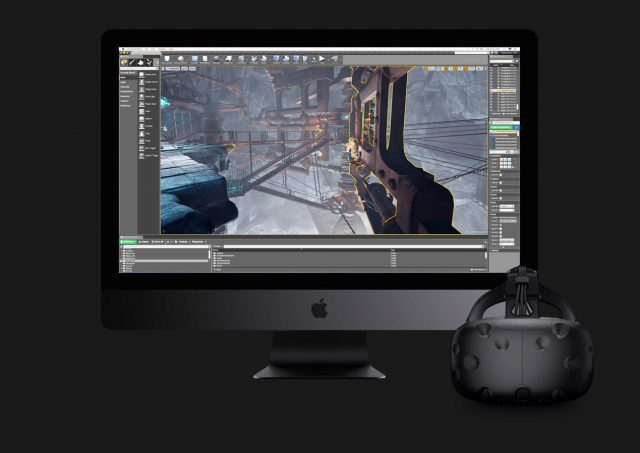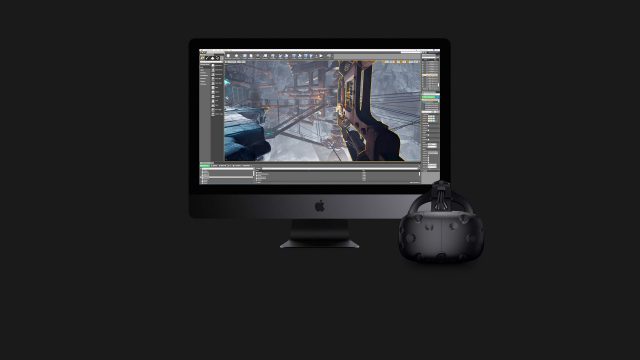Back at WWDC 2017 Apple finally embraced VR, announcing that it had been working with Valve to bring SteamVR and the HTC Vive to MacOS, along with a number of other announcements about how the company would support VR as part of its ecosystem. With the anticipated iMac Pro due to launch on Thursday, the company is positioning its most powerful computer yet as an ideal machine for VR development.
Apple may not hold the majority of the PC market, but among certain sectors its hardware and software are nearly industry standards. For those industries which rely heavily on Apple hardware and software, VR has been minimally accessible at best, with none of the major PC VR headsets supporting MacOS and a distinct lack of ‘VR Ready’ hardware offered by Apple.
That changed earlier this year when Apple announced new iMac & external GPU offerings which could be finally be equipped with hardware meeting VR Ready specifications, including the iMac Pro, the first ‘Pro’ machine in several years, which can be equipped with the powerful Radeon Pro Vega 56 (with 8GB of HMB2 memory) or Vega 64 (with 16GB of HMB2).
Apple is positioning the new iMac Pro—available this Thursday starting at a cool $5,000—as an ideal machine for VR content creators (both 360 video and real-time). Of all the use-cases they could appeal to on the computer’s meticulously crafted landing page, VR gets a call-out with the HTC Vive making a cameo:


Virtual reality gets real.
With the new Vega GPU, iMac Pro lets you do more than just immerse yourself in VR worlds. It lets you create them from scratch.
In typical Apple fashion, it’s not verbose, but—knowing that the copy on the page was likely vetted by the company’s top executives—it tells us a lot about where Apple’s head is at. Indeed, Apple’s SVP of Marketing, Phil Schiller, quoted a review of the computer, from photographer Vincent Laforet, highlighting the system’s purported VR chops.
With VR Ready hardware finally becoming available to Apple devotees, both Unity and Unreal Engine—the leading VR content creation tools—intend to support their VR SDKs on Mac, allowing developers to create real-time VR content on Apple’s machines. Apple earlier this year also said that it planned to update Final Cut Pro X to support 360 degree video editing. That means that video editing’s leading tools, Final Cut Pro X and Adobe’s Premiere Pro, will both offer 360 video editing capabilities.
For now, Apple’s VR moves largely appeal to VR creators. In time, once the company’s ecosystem of developers and content creators begin working in the medium, one can expect that Apple will focus its marketing more toward consumers of VR content as the company begins offering more consumer-focused VR Ready hardware.

